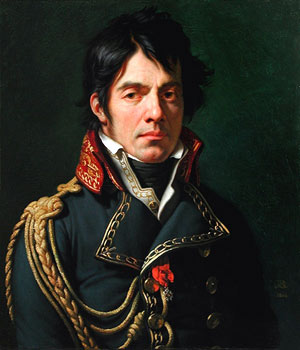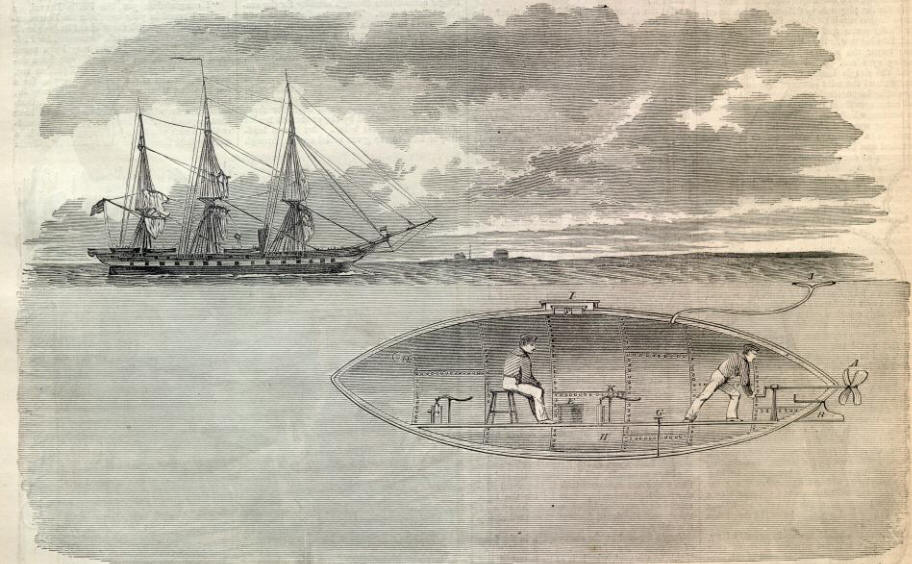
“There have been a number of leaders in the long history of military medicine that helped improve and modernize patient care. Here are a few of them.”
“A PHYSICIAN is worth more than several other men put together, for he can cut out arrows and spread healing herbs.”
This passage from Homer’s Iliad, the 8th century BCE epic poem about the decade-long war between the Greeks and the Trojans, fairly characterizes the limits of battlefield medicine from the ancient world right up to modern times. Yet until the late 19th century, military hospitals could be just as hazardous to patients as combat itself. In fact, more casualties died from infection in dressing stations or recovery than were killed by the enemy. And throughout history, soldiers were just as likely to perish from disease in unsanitary camps and barracks as in battle. Despite this, there have been a number of leaders in the long history of military medicine that helped improve and modernize patient care. Here are a few of them.

Caesar’s surgeons
Although not a doctor himself, a significant contributor to early military medicine was the Roman Emperor Augustus who ruled from 27 BCE to 14 CE. Understanding that a winning legion was a healthy legion, Augustus established history’s first military medical academy in hopes of raising the professionalism and profile of army surgeons. Each doctor attached to the army would have to successfully pass through the school in order to practice. Battlefield medicine in the Roman army was remarkably advanced and certainly outstripped the medical knowledge of the Medieval period. [1] A doctor’s instruments in ancient Rome were remarkably similar to those of surgeons of the 19th and early 20th centuries. [2] Roman surgeons used forceps, scalpels, tourniquets, catheters and even arterial clamps. Although, they had little understanding of bacteria, Caesar’s medicos knew the value of boiling instruments before and after every procedure. Their medicine chests would have also contained a number of familiar sedatives and painkillers, like opium as well as henbane seeds, which contained scopolamine. Wounds were treated with acetum (made from vinegar), a very effective antiseptic that, although agonizingly painful when applied, could prevent the sorts of infections that would typically make even superficial wounds fatal. Perhaps the greatest contribution of these early army doctors was in the field of disease prevention. [3] Roman surgeons were advanced enough to recommended generals build forts away from mosquito-infested swamps, while advocating for waste ditches within fortifications to channel waste away from the troops’ living and eating areas. Unfortunately, a great deal of this early knowledge was lost to history following the fall of Rome and the subsequent Dark Ages.

French doctor wrote the book on gunshot wounds
The 16th century French surgeon Ambroise Paré was famous for treating French monarchs and common foot soldiers alike. He is most remembered for his contributions to . [4] Paré devoted himself to combat medicine following the 1536 Battle of Milan. In the aftermath of the clash, he was outraged when we watched French soldiers kill their wounded comrades, believing that injuries from powder burns were untreatable. By 1545, Paré had amassed enough knowledge of battlefield medicine to publish a book on the subject: The Method of Curing Wounds Caused by Arquebus and Firearms. Surgeons in the 15th and 16th centuries were discovering that balls fired from smoothbore muskets caused horrific wounds, particularly when they passed through arms and legs. The cure-all for treating these early gunshot wounds was amputation — hence the army slang that referred to surgeons as “sawbones.” For centuries, tissue exposed following an amputation would be cauterized with a red hot iron. Searing the open wound often did little to stop the bleeding and the procedure itself was so painful, patients commonly died on the table from shock. Paré tried something new to stop post-operative bleeding: ligatures. Using this technique, open arteries would be tied off using thread. While Paré’s patients often died of infection caused by the ligatures themselves, his early work has been heralded as a milestone in medicine. [5] He was also one of the first to research the phenomenon of “phantom pain” – the sensation experienced by amputees characterized by discomfort felt in the extremities of limbs that are no longer there.

Napoleon’s favourite surgeon
France produced another leader in battlefield medicine — Dominique Jean Larrey. Attached to Napoleon’s armies from 1797 to 1815, Larrey pioneered the use of mobile field hospitals that could be packed up and transported along side an army on the march. And it wasn’t just the hospitals that could be rapidly moved, Larrey realized. After watching Bonaparte’s ‘flying horse artillery’ speed guns across the battlefield, the surgeon imagined such methods could also be used to evacuate wounded soldiers from combat. He trained stretcher bearers, corpsmen and even wagon drivers and formed them into the first military ambulance corps. [6] And with his mobile hospitals and ambulances collecting and treating more wounded soldiers, Larrey organized a system in which medics could prioritize the seriousness of injuries so that that the worst wounded would be operated on first – a concept known as triage. Rank or nationality made little difference under the system – who was bleeding the most did. Larrey even instructed his medics to provide care for enemy soldiers. His efforts won him the Légion d’honneur in 1807. He was even granted the title of baron by his grateful emperor. Larrey also won the admiration of the enemy. At the Battle of Waterloo, the Duke of Wellington ordered his troops to hold their fire when Larrey and his medics were busy collecting the wounded. The good doctor was captured by the Prussians at the end of the battle and sentenced to death. Amazingly, he was spared when Marshal Blücher realized that French medics using the doctor’s techniques had saved his own son’s life when the young man had been wounded in battle. [7]

Russian doc knocks ‘em cold in Crimea
Nikolay Ivanovich Pirogov, a Russian surgeon, is also considered to be one of the “the founders of field surgery”.[8] During the Crimean War, he further improved Larrey’s triage techniques, but was most famous for using ether as an anesthesia while operating on wounded soldiers during the Siege of Sevastopol. Prior to that, injured soldiers would be given rum or wine, a dose of opium, or perhaps just a musket ball to bit down on to deal with their pain. Pirogov also pioneered using plaster casts to immobilize broken limbs and organized a corps of women nurses.

Modern battlefield medicine
Dr. Jonathan Letterman, is famous for his contributions to the Army of the Potomac during the American Civil War. After seeing first hand the slipshod treatment of the growing scores of wounded following early battles of the war, Lettermen devised a scheme in which casualties would be treated first at forward aid stations attached to each regiment. Once stabilized, the wounded would then be transported to divisional mobile field hospitals by a professional ambulance corps. Later, Letterman would reorganize the Union Army’s method of distributing medical supplies. All of his work was put to the test on a grand scale following the Battle of Fredericksburg, when his medical units would treat 12,000 casualties. At Gettysburg, that number would rise to 20,000. His methods were so successful Washington ordered them adopted by all U.S. military forces.
___________________________________________
Did you like this story? Please rate it below and let us know what you think. Comments are always welcome too.
If you’d like to receive alerts about the latest articles and posts, click on the link in the upper right margin marked “FOLLOW THIS BLOG”. And don’t forget to follow us on Twitter — @milhistnow
SOURCES
1. http://www.crystalinks.com/romemedicine.html
2. Ibid.
3. http://www.au.af.mil/au/awc/awcgate/milmedhist/chapter1.htm
4. http://en.wikipedia.org/wiki/Ambroise_Par%C3%A9
5. Ibid.
6. http://www.whonamedit.com/doctor.cfm/3018.html
7. Ibid.
8. http://en.wikipedia.org/wiki/Nikolay_Ivanovich_Pirogov










This was very good information, sir. Thank you.
I’m glad you enjoyed it. Thanks.
Good article there!
It is sad to see how much information was lost during the dark ages (not only in medcine) and where we might be today without it!
How true. Thanks for the feedback!
I feel so sorry for the poor wounded who had to be treated in the primitive manner that they were during the Civil War.
Yes. I’d much rather be injured in the 21st century.
Fantastic blog post! I’m particularly intrigued by the story of Napoleon’s surgeon. The part where the Duke ordered his troops to stop fire whilst the wounded were being removed from the battlefield shows a certain degree of humanity, even in the worst times of war. Thank you for this
Glad you enjoyed it. Thanks.
Thank you for the well written piece. My grandfather was a doctor who served in the Navy during WWII. He was stationed in the Solomon Islands where he treated many soldiers injured in battle. Your article gives me some more perspective on my grandfather’s experience.
Thanks for the note, and offering up details about your grandfather. I’ll bet you have some harrowing stories of his that you could share.
None that I am aware of yet. I am currently working on transcribing his letters although I am not sure how much information he included. Partially because of the censors or because he didn’t want to frighten by grandmother. I’ll have to check with my dad to see if he remembers any stories from after the war.
Just out of curiosity, wasn’t Lincoln the President during the Civil war, or is that a different Washington they’re reffering too?
“Washington” being shorthand for the Federal government, War Dept., etc. Not George Washington.
Really enjoyed the information. Just letting you know that there are a few gramatical errors and a word missing in there somewhere. Makes it less professional. You may want to correct. Cheers though!